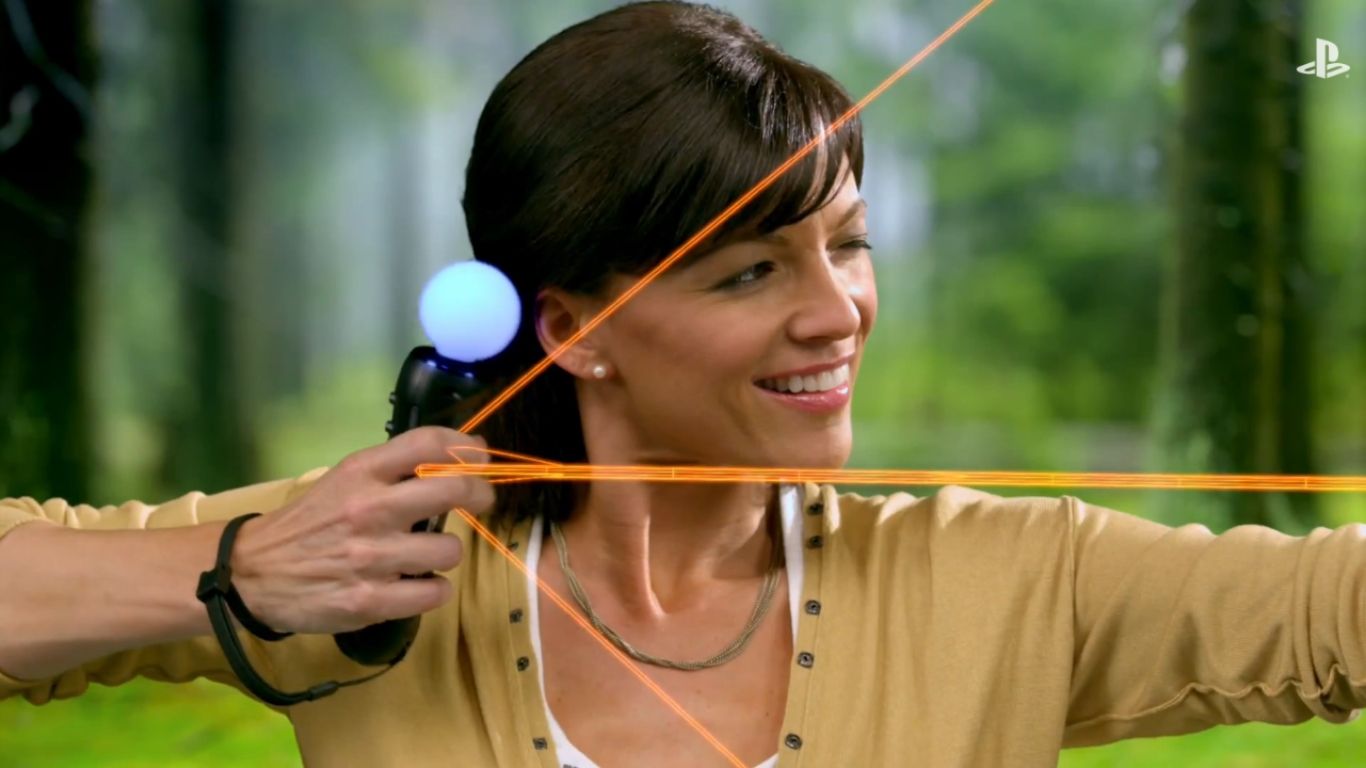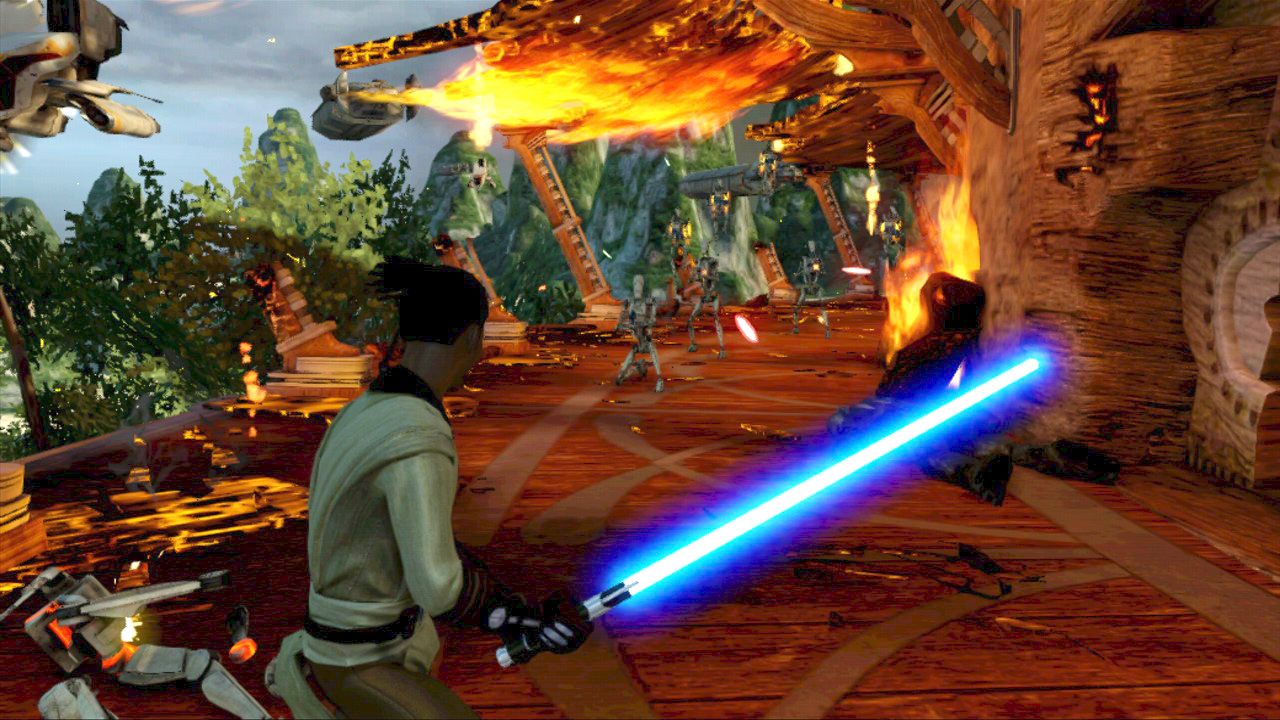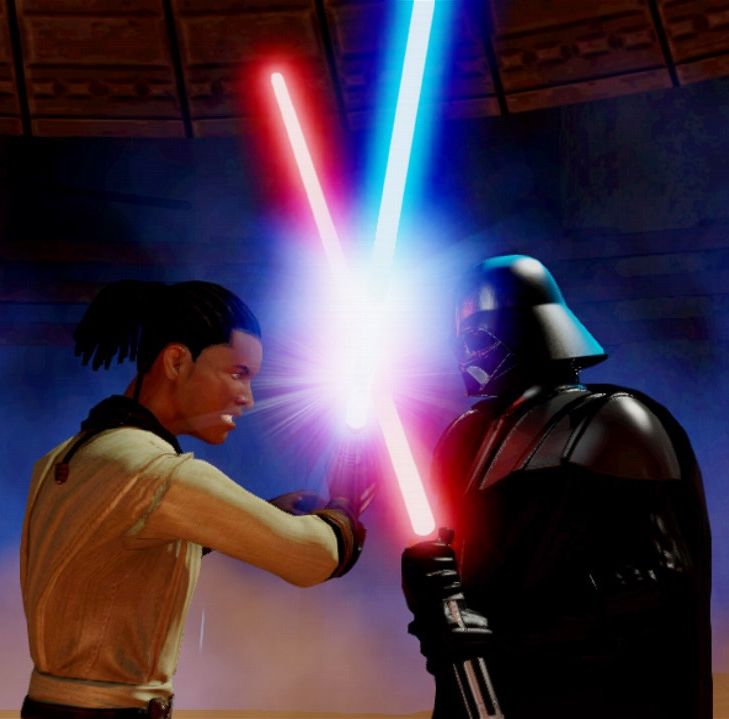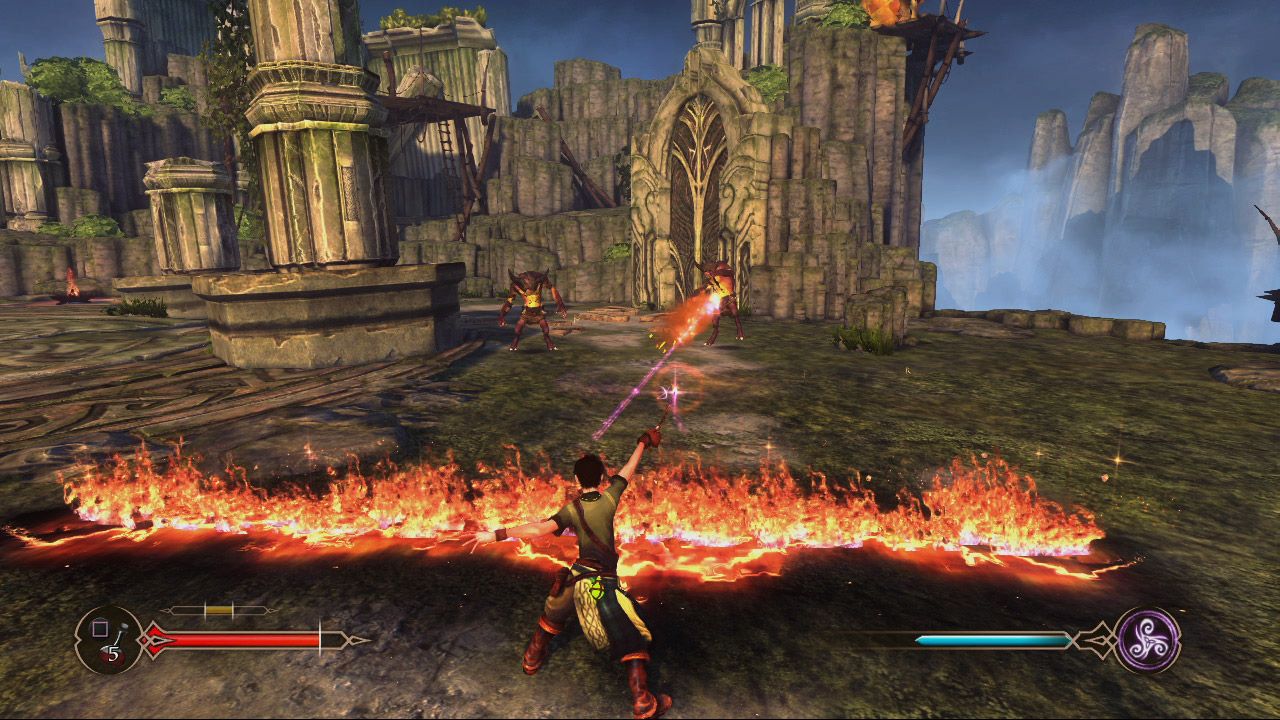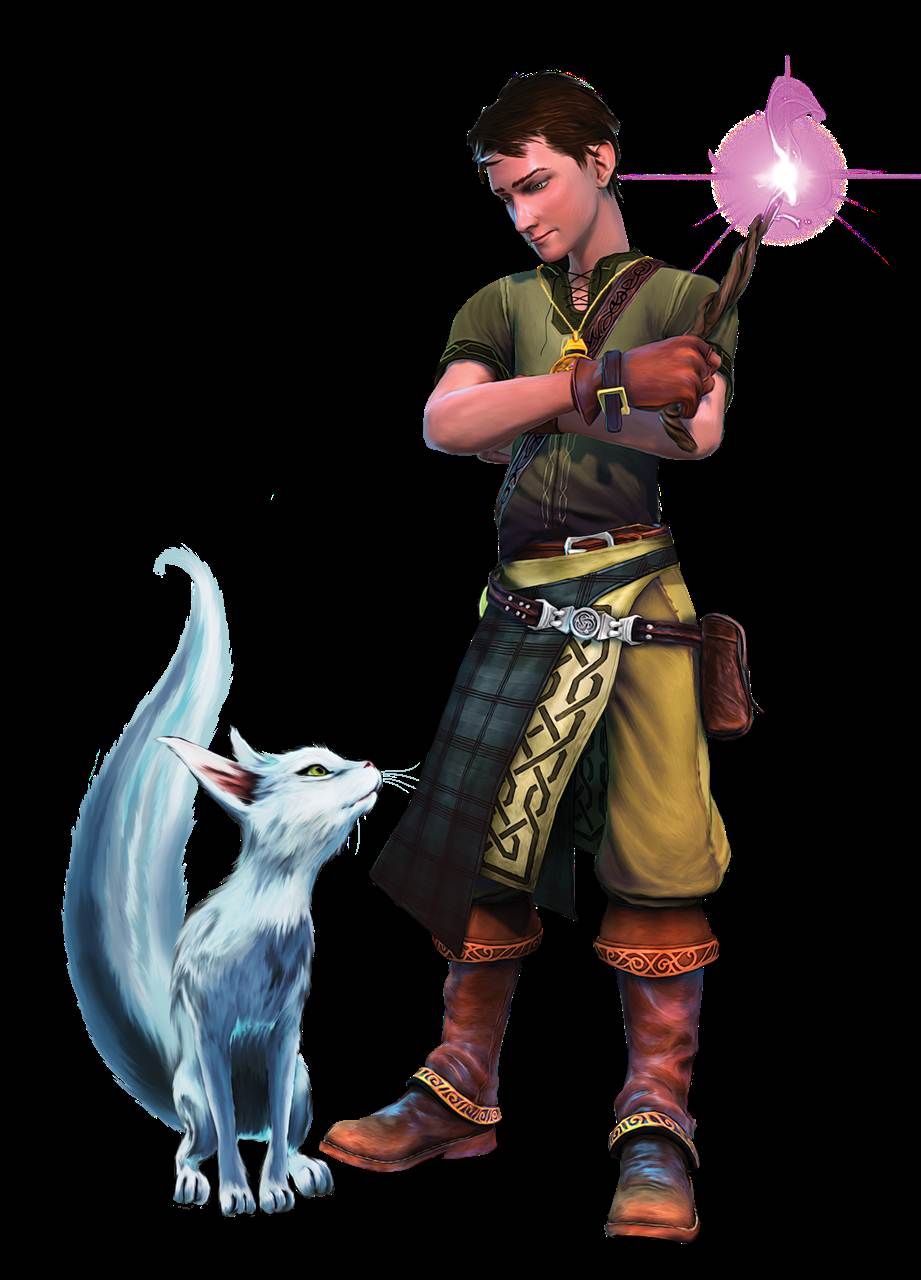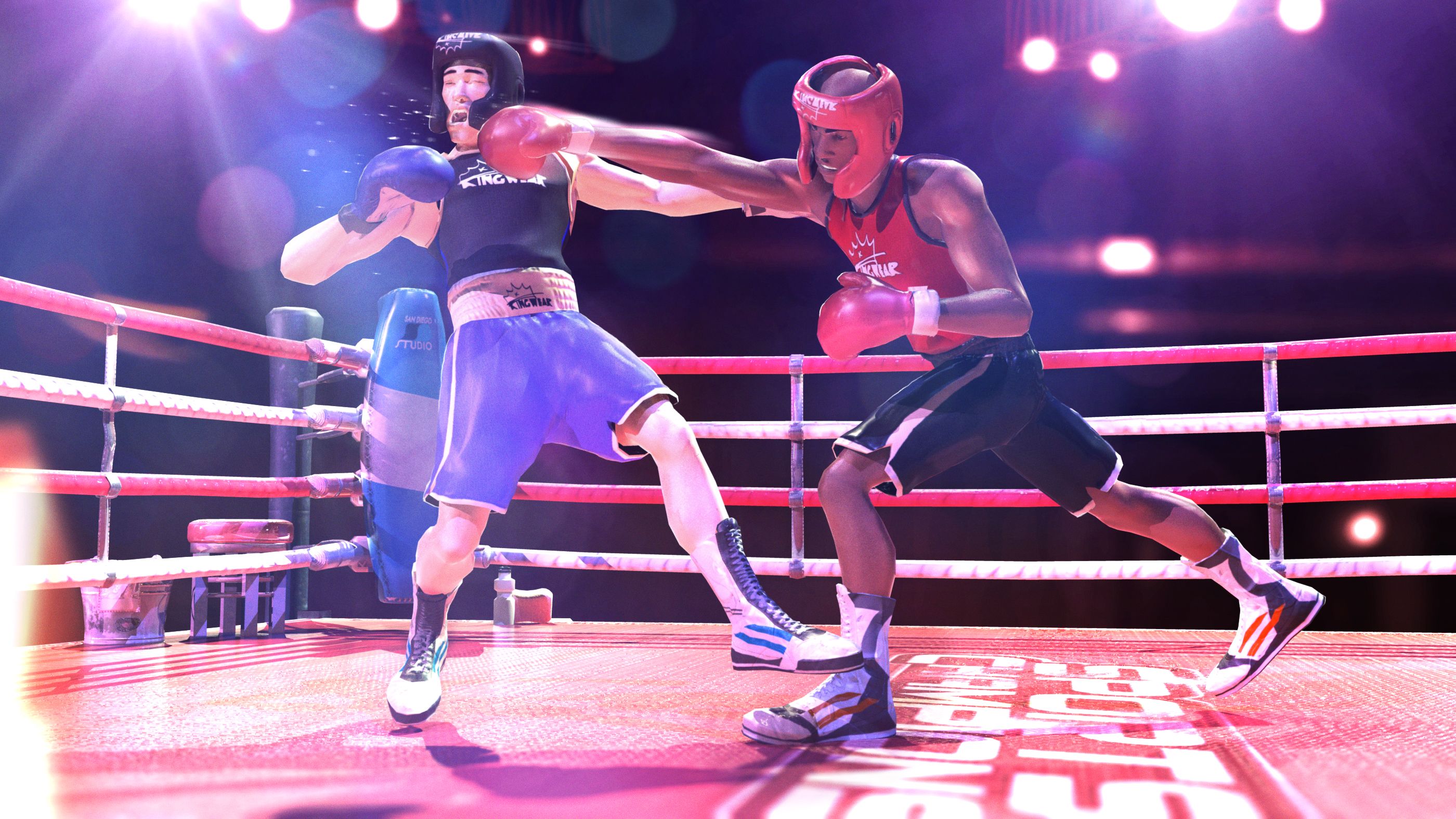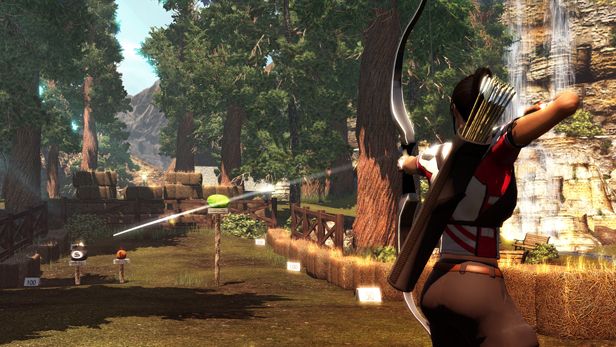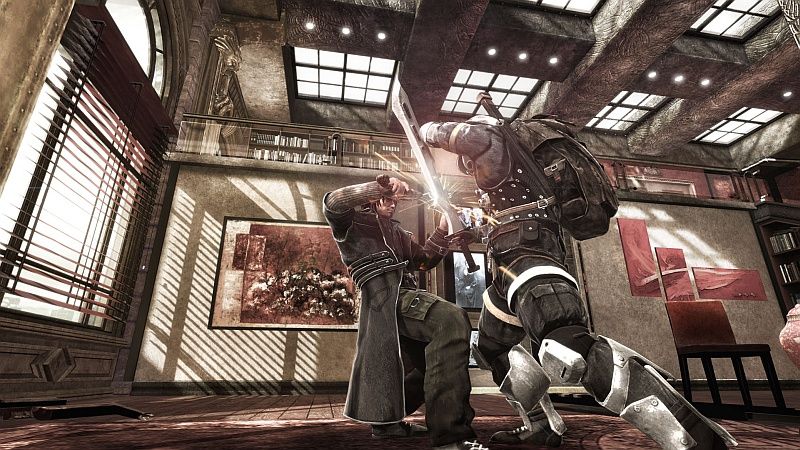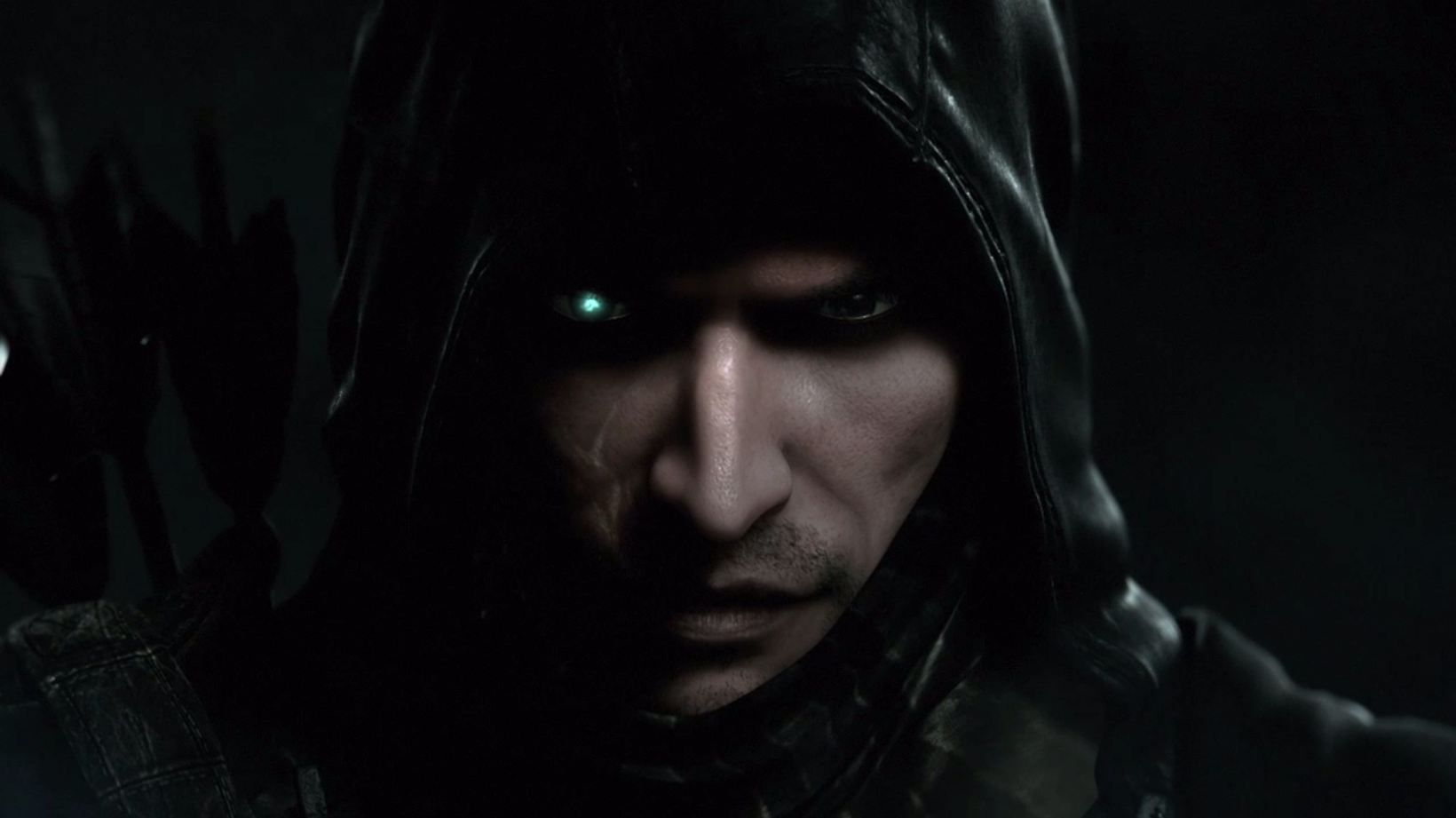It's been about three years since Sony introduced the Playstation Move and... well, sold it to about a dozen people (including myself). For most, its sole purpose was to collect dust, be used periodically for half-hearted exercise, and to show off its advanced waggling controls (suck it Nintendo!). But believe it or not, the Move has potential. Or at least I think so. And apparently so does Sony, because they're still pushing it, and according to the show back in February, expect you and other gamers to play it on the PS4 next-generation.
Back during February's PlayStation Meeting 2013, Sony's PS4 reveal had one segment of the show dedicated to the use of the PS Move for next-gen. This demonstration showed Media Molecule--the creators of LittleBigPlanet--sculpting amazingly detailed digital works of arts and performing advanced puppet shows and concerts with the Move. Riding this wave, I half-expected Sony's E3 conference to have some mention of it, and yet a whole week went by and I never heard a single peep. It may be that Sony is abandoning the Move and--pardon the pun--moving it from priority status to lowly passion project. Or, it could mean that they want a focused presentation that will continue to counter Microsoft's every move--we all know a ten minute demo of the WonderBook was not going to do Sony any favors in the next-gen console wars. Does this mean the Move is completely dead? Or waiting for a renaissance?
With Nintendo's Skyward Sword & Metroid Prime 3: Echoes, and Sony's Sorcery, Sports Champions franchise, and Deadmund's Moves in mind (arguably the best examples--technically speaking--of what motion controls can do), and perhaps even the idea of Sony's HMD set (their PS4 console version of the Windows-based Oculus Rift) to make games even more immersive, I'm pitching five ideas for games that can get the Move moving off the shelves and into your homes.
Note: These ideas are primarily for people who actually want to get up and do physical things when at home, and not for those who remain firmly faithful to the religion of Couchafarianism.
____________________________________________________________
A Real Star Wars Jedi Game
When Star War: Kinect was announced, fans of both Star Wars and the Kinect went absolutely nuts in anticipation for what seemed like the ultimate Star Wars game. But how can an ultimate Star Wars game not put an actual lightsaber in your hand?
Technically speaking, the Move is more than capable of handling a hardcore game that combines free-roaming, adventuring, lightsaber duels, and Force powers. Using the extensive list of Star Wars' Expanded Universe Force abilities, powers as diverse as the typical Jedi Force Push ability and Sith Force Lightning to the Expanded Universe's Force Combustion, Cloak, Flash, Status, and Deadly Sphere would make for an intricate Ability Tree. The Navigation Controller could, in combination with the Move buttons, control movement, dashes/dodges, jumping and strafing. Its D-pad would be used for Hot Keys that allow players to switch powers quickly and on-the-go without interrupting the flow of action. The Move itself would obviously be used for attacking with the Lightsaber, using the precise 1:1 tracking to hit enemies on special weakspots for added variety.
To capitalize on the idea of being trained as a Jedi Knight in an era of conflict, the story could take place in the Old Republic Era, where Jedi and Sith are numerous; the New Republic and/or New Jedi Order era, with perhaps the player as a new Jedi being trained by Luke Skywalker himself to combat the remnants of the Empire (and later defending the galaxy from the monstrous Yuuzhan Vong); the Star Wars Legacy Era, with players dealing with a troubled Jedi Order and the return of the Sith. These periods offer a lot of breathing room to establish something new and different, and still allows for a variety of plot options and gaming mechanics.
Ideally, you could--like Mass Effect--perhaps choose a background, indicating your race and your origins. Perhaps you're a Human, or an ever-popular Twi'lek; perhaps a Nautolan, or even a Witch of Dathomir. Perhaps, depending on your choice, you get certain starting stats or bonuses, like being a Miraluka with a higher attunement to the Force, or a Nautolan with a higher diplomacy stat or defense stat (due to their pheromone sense and multiple hearts).
Like Fallout 3, the game could start with your character as a Youngling going through a personal story as you--the player--also learn the controls and go through the stages of Jedi Apprenticeship. During the Padawan period you get to build your own lightsaber, and at the end you go through the Trials of Spirit, Skill, Courage, Flesh and Insight/Knowledge. This then brings you to the rank of Jedi Knight, ready to dive further into the story.
As you journey through the game, you'll take on missions, explore multiple plots, make alliances, and fight (or join) enemy Jedi. You'll partake in optional mini-games to expand your powers and attributes, like the Alchaka Meditations and Art of Moving exercises Jedi go through, to increase stats. Collectibles and activities like Pod-Racing are great to take a breather from defending the galaxy, but again, the choice is all up to you.
Ultimately this is a game about immersion, and with a story that offers narrative choice (like Mass Effect) and the ability to interact with dozens of facets of the world, a Star Wars Move game could be the freshest take on the franchise and Motion Gaming than ever seen before. With Disney's relatively recent acquisition of the Star Wars franchise, a new fresh experience may benefit both LucasArts and Sony, even if the last attempt at jedi motion-gaming possibly left a bad taste in their mouths.
____________________________________________________________
Sorcery II
The first Sorcery had great intentions. It had one mission statement: make a hardcore Move game, built from the ground up for motion controls, centered around a boy named Finn and his magic wand. Conceptually, it worked: players in Finn's shoes with the Move as a wand could flick their wrists to throw arcane bolts, whip their arm over their heads to create a whirlwind, and dart their wand across and below them to create a wall of flame. Players could also combine elements, like sending a whirlwind through flames to create a firestorm inferno (and then shoot more arcane bolts through it to create flaming bolts). The whole idea was that YOU were the sorcerer, and YOU were the hero.
But in execution, the game suffered. For a game trying to evolve from the Wii's "waggle" stigma, Sorcery felt like advanced waggling, with the novelty of the Move as a wand undercut by the intense flicking the game's combat encouraged. The only thing hardcore about the game's motion controls was how badly your wrists hurt after a session of spellcasting.
So instead of gestures, what if the game relied on hot keys to switch spells? Combined with an autofire button, the emphasis would be more on strategy, spell-weaving, and pure fun, and less on tiring, tedious, half-functional motion controls. Flicking and curving spells around corners (think the film Wanted's "curving the bullet") could be reserved for special, stronger charged attacks and advanced tactics.
Story-wise, Sorcery excelled: with a simple story following two likable characters, on a quest to stop the Nightmare Queen from taking over the world. A sequel could follow a now adult Finn, retaining his brash Nathan Drake-like charm, off to stop another huge threat. Now a master of the five elements, Finn has to use his skills to create even more spells and apply them to new situations. Like during a harrowing mission through a dangerous field, Finn could use fire and water to create a steamy mist that Finn can stealthily hide in; apply spells to the environment to unlock secret areas with special items; use timed wind blasts coupled with artificial wings to gain limited flight; apply lightning to your movement to dash about the world faster; or add elemental magic to dragon bones to summon a fiery or icy dragon to fight by your side. Really, the options are endless. Finn's mastery of alchemy could also be applied to unique power-ups, special hidden spells, and special enhancements for Finn's wand. Add with this a much needed sense of discovery and freedom, and Sorcery II could be leagues ahead of its first installment.
Sorcery may not have been the Kinect-killer Sony hoped it would be, but that doesn't mean it was a completely wasted opportunity. Like most average movies that inspire far superior sequels, the foundation is already made: now all they have to do is build a better game.
____________________________________________________________
Sports Champions 3
This is an easy one.
If there's anything Sports Champions accomplished, it was giving the Playstation its very own "Wii Sports" type of title, which has worked in providing fun and generally being a tech demo for the potential of what a Move controller can do. But the game was plagued by long tutorials--I'm looking at you Volleyball--or boring sports (what the hell is Bocce Ball, anyway, amirite?). Most of the games were okay, and worked, but just didn't have enough content or flair to make it stand out. Arguably, the best "Sports" available were Archery and Gladiator Duel, with the former giving a variety of fun challenges in Single and Multiplayer, and the latter giving a pretty good--if bare--fighting game for sword-weilding Movers.
The sequel, Sports Champions II, added a pretty cool customization option, a more "party" oriented design, a better range of typical sports choices, and even brought back the popular Archery games (but oddly left out the equally popular Gladiator Duel). Still, the game was a by-the-numbers attempt to get at both the Wii and the Kinect's fans, and didn't really attract new gamers to its fanbase.
Now that the Move device has been established as a technically effective device, there's no need for such a bland title. No need to prove anything anymore. Developers San Diego Studio and Zindagi Games only have to take what they know about the Move device and make a game with even more life to it.
Creating a new Sports Champions title should entail two main objectives: the first to add some personality to the franchise, and the second to add a more diverse range of fun games. A new Sports Champions should leave behind the sort of pseudo serious or dry atmosphere of past games, and get a little crazier. No need for an Olympics ripoff here. The goal is finding some random, maybe even silly reason to get a bunch of people together in a competition. Perhaps a tournament of "champions" hosted by some larger-than-life mythic god(s), with a crazy Buzz-like host who comically berates the champions who compete for his prize.
The craziness shouldn't end there: characters should have a little more style, a little more uniqueness in their design. Playing Sports Champions felt like an 80s cartoon: there was one caricature from every culture, from the agile martial artist Asian chick to the, uh, "Urban" Black guy, to the hillbilly with a cowboy hat. Sports Champions II allowed you to make your own characters with some crazy unlockable items (like flaming bowling balls or ram-horn boxing gloves), but that's only the start. Give everyone crazier personalities, more diverse costumes than just simply pallette swaps, and even wilder options for creating your own "champion."
Finally, throw in any sport that makes sense for the Move. Of course, Archery should remain, virtually untouched (except for the Zombie Challenge: make them real zombies this time). Bring back Gladiator Duel and maybe add in some variety, with some optional rules from Fencing or Kendo, and more challenges involving "Sword-stuff" (like perhaps Samurai challenges where you have to draw and attack faster than your opponent, or slice through an oncoming projectile like Isao Machii). Bring back Tennis, Boxing and Disc Golf and amp them up a little. Throw in the Javelin, Gun/Rifle Shooting, and Fishing, even, but make the goals include hunting monsters or something. And hell, maybe even bring back Bocce Ball.
Like I said before, the foundation is set: time to build.
____________________________________________________________
Highlander: There Can Only Be One
Speaking of "Gladiator Duels", what better way to sword fight through the ages than a Highlander game?
With a new movie reboot in pre-production right now (for what's seemed like ages), it'd be a great opportunity to tie in what could be a PROPER licensed game, if enough care was put into the controls to make this motion game work and function well. Emphasis would be on the technical side, because with a game all about swordplay, hit detection and 1:1 accuracy is an absolute must.
Rather than taking place during the events of the movie (or any of the horrible movies that preceded it), a new Highlander game would take place in the continuity of the larger Highlander universe, with its own unique, new story. Players could create their own immortal, complete with unique physical features, a name (another MacLeod?), and their own custom sword. After that, the character would be guided through a tutorial section that takes place during the "Grace Period" most immortals have, when they are just turned, and most other immortals allow them time to be trained by a more experienced immortal before properly entering "The Game." It is here that immortals are taught the three golden rules of "The Game":
There Can Be Only One: Players should know that in the end, the whole point of the immortals dueling is that eventually, there can be only one. Different movies have offered different ideas on what the "The Prize" actually is (most agreed upon is the knowledge of every immortal who ever lived), but if a Highlander Move game ever included online leaderboards or online multiplayer, simple domination, better stats, and new Quickening skills should suffice in this ongoing and seemingly endless conflict.
Immortal combat is one on one: no outside interference, ever. This is an easy excuse to keep action in a Highlander game simple, but still give room for growth. With mechanics centered around one on one combat (and perhaps occasional group battles against enemy mortals or cheating immortals), the old school game design approach "easy to learn but hard to master" could be applied to how combat works in the game. This gives players time to learn and master their skills just in time to get another challenge that keeps them on their toes.
No Immortal can fight on Holy Ground, no matter who regards it as Holy: If set in an open world game, this could provide players with a place to avoid enemies, or could simply be the setting of their hub, where they can practice their skills, customize their player, and set courses for around the world missions.
In fact, a Highlander move game could offer a wide variety of settings, with a single player campaign that takes place all around the globe both in the present and the past. And as for what the present is, we are talking about the Highlander universe... which could be set in distant past or centuries into a dystopian future. The idea of being an immortal has such far-reaching potential for narrative potential that the game could literally take place anywhere and anywhen.
With the Quickening--the electrical energy immortals absorb after beheading an enemy--granting warriors skills and abilities (that sometimes border on magical), players could also earn special powers that can be applied to their world. Perhaps these skills or the immortals they come from could even be randomized, so that one player who plays the single player campaign could end up with an entirely different slew of abilities as another. When sneaking into a penthouse to steal a priceless artifact or challenge an immortal foe, one player could have learned the stealth skills of a ninja to evade security, another could have earned the lock-picking skills of a jewel thief to get in through doors and the other could have earned the hacking prowess of a computer genius to turn off all technology monitoring the building. The possibilities are endless. Most importantly, they'd add a sense of variety to a game that could be all about swinging your controller around like a madman.
With next-gen technology, a Highlander game doesn't have to be the best waggle game in the business: it could just be a seriously fun sword fighting simulator with a world so grand that even an immortal who's seen the pyramids built and Rome burning would be awed.
____________________________________________________________
Archery-Based Game
Taking a page from Thief, Hawkeye in the Avengers film, and the ever-popular Archery game from Sports Champions, a modern Robin Hood--taking many liberties with its material--could be the best combination of aim and adventure even seen on a console before.
Either set in a grim and gritty Nottingham, or an entirely new and modern world, a Robin Hood game could give the player an arsenal of arrows that--be they magical, high-tech, or rigged together through old school means--include arrows for all occasions. Like Thief, fire arrows could be used for lighting torches or taking down enemies, water arrows could be used to take out lit torches, and explosive arrows could be used for taking down walls or groups of angry enemies. Primarily a stealth game, an emphasis on how the arrows are applied to a situation can alter how gameplay flows; with puzzle elements involved, a sharp eye and a sharp mind would require players to use lateral thinking to overcome obstacles.
Using Hawkeye's mechanism in Avengers could explain how someone could quickly access such an incredible library of arrows so accurately. If magical, a player could enchant his arrows as he pulls them out; if old school, perhaps there could be an emphasis on gathering materials that can be used to craft special arrows while on-the-go. No matter the world it's set in, the game should have a focus on narrative, have objective or level-based gameplay (with challenges on the side), and task players with tackling morally gray characters and situations that could very well change the outcome of their story. This invites replayability for both the gameplay and the plot, and of course challenges unlocked during the main campaign would be available to play in other modes.
As one of the most popular games in either of the Sports Champions titles, an archery game could be a fun way to give players motion controls without needing them to constantly be on their feet and swinging their hands wildly. After all, gaming is all about precision, skill, and fun: isn't that what archery is about?
____________________________________________________________
More Move To Come
I could go on and on, but the potential for good Move games are there, if you ask me, and they just need a little more time and care to get the peripheral moving, if there's a market still interested. With a few triple A games (or, at least, double A games) created to prove the Move's worth, other games could be dreamt up and made in the wake up these successes.
Imagine a Thor: God of Thunder Move game where you could not only smash foes, but summon lightning by charging your wand up into the air and then aiming at enemies; summon wind by winding your arm to wipe enemies off the stage; catch enemies in a radial blast by pounding the floor. Imagine a Tenchu: Move Assassins game where you could actually carry out assassinations by hand (I'm sure parents are going to love that). Imagine a Thief: The Move Project, where you apply my earlier ideas for an archery game to his special arrows. Imagine a Legacy of Kain: Move Reaver game where you could affect the world and enemies with different types of Reavers and magical glyphs you control with your hand.
Again, the potential is there. It's safe to say that most of Sony's Move titles were limited in time, budget, or effort, so a little creativity and support could go a long way. And seriously, how hard is it to make a true Harry Potter game?
How do you feel about motion controls? Is it a dead gimmick that should stay in the grave? Does the Move actually have any fuel left for a better line of games? Do you have motion control ideas that don't involve dancing? Let us know in the comments below!

